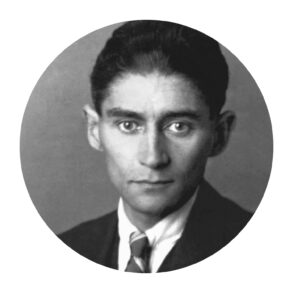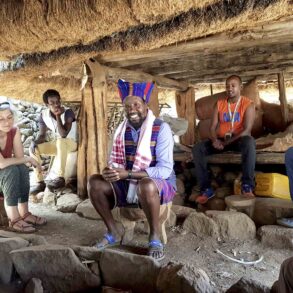It is rare for the Nobel Prize in Medicine to be awarded to someone who is not researching topics with clinically or therapeutically relevant results. Svante Pääbo, a Swedish scientist and director at the MPI in Leipzig, has achieved it. His discoveries have consequences for the Anthroposophical interpretation of the origin of human beings.
Already during his doctorate in the 80s, Svante secretly began isolating and sequencing DNA from an Egyptian mummy. An article published about it in 1985 aroused enthusiasm but also doubts. Pääbo took this as an opportunity to specialize single-handedly in the molecular genetic investigation of DNA from fossil human bones. As he emphasized in an interview, it is not an easy task because dust particles in the air often contain more genetic material than the entire sample – they can lead to extreme contamination. In 1997, Pääbo and his research group attracted worldwide attention by decoding the Neanderthal genome. It turned out that people from Europe and Asia carry two to four percent gene sequences of these human relatives in their chromosomes and that, distributed over the entire Eurasian population, about 50 percent of their genetic material persists in modern humans. Also exciting was the discovery of a third human species that, like Homo sapiens, existed together with Neanderthals for 100,000 years: Homo Denisova. It seems like a jackpot in the lottery that the finger bone of a Denisovan girl could prove that her father was a Homo sapiens, the mother a Homo Neanderthalensis.
Pääbo is not only creative and ingenious but also a gifted team leader and partner in cooperation – the opposite of an alpha male. Not least, for this reason, it was possible to discover genes in the sheer, unmanageable amounts of data that only occur in modern humans and are involved in the biological foundation of language and the development of a giant brain.
The research results also show that the three different subspecies of Homo connected again and again. The definition of populations as a race is – as Pääbo points out – a misguided European construct!
Rewriting Human History – The Expulsion From Paradise Began 50,000 Years Ago
The following considerations can be considered speculative; however, they can be justified against the background of Rudolf Steiner’s depictions of the development of humanity. Steiner points out that in the Lemurian epoch, before the exit of the moon, fewer and fewer people were able to embody themselves. Therefore, at the end of this epoch, there were only a few people on Earth. That is how he interpreted the story of Adam and Eve.

Pääbo’s research group has calculated from the genome data that the three Homo species lived together or side by side for about 100,000 years. Undisputedly, 50,000 years ago, Homo sapiens was the only species left behind; the reasons for this are unknown. I would like to call this the birth of modern humanity because the deceased were buried with grave goods for the first time. Funeral rituals suggest a consciousness that reveals a sense of the afterlife beyond the earthly age. The rituals mark the birth of religion, which was not needed before when deities and spirits still populated the physical world. It stands at the cradle of the modern human being. Hans Jonas sees here a consciousness for which life was a matter of course, but death a mystery. I see the disappearance of the two companions – Neanderthals and Denisovans – in such a way that they have fulfilled their task as the ‹midwife› of modern humans and have withdrawn. Homo sapiens took further steps on the path of their earthly mission in fellowship with their peers. About 35,000 years ago, art was created, which is well documented with cave paintings and the first musical instruments. And it is only with the Enlightenment – so my hypothesis – that the third, youngest sister, science, emerges.
Pääbo is not only creative and ingenious but also a gifted team leader and partner in cooperation – the opposite of an alpha male.
Physical or Mental Characteristics?
If one accepts this rough sketch, some ideas must be revised, which go back to Rudolf Steiner’s statements. Thus, the origin of modern human beings lies long before the Atlantean period, which began about 12,000 to 14,000 years ago. In my opinion, it is also doubtful that the separation of the sexes and the described head or limb people can be anatomically interpreted. From the reasonably well-documented evolution to humans, it is not apparent that human-like creatures with large heads, a broadly developed breathing-heart system, or particularly pronounced limbs existed – certainly not in the last 14,000 years. It is more obvious to assume that the emotional correspondences of thinking, feeling, and wanting were differently pronounced in different communities, which we can still notice and experience today. An argument against biological gender segregation is that it was already developed in all mammals, from which humans must have emerged – also in Rudolf Steiner’s opinion. Here, too, it is more a ‹consciousness› of sexuality (Adam recognized Eve).
This closes the circle again to Svante Pääbo. A well-developed emotional life, a sound mind, and a corresponding life of will must have a biological basis. Are the exclusive genes of Homo sapiens, which enable the ability to speak and a large brain cortex, which it does not share with any human relatives and primates – the basis for the abilities that we can still acquire only in the human community itself? With a good science of Anthroposophy, Pääbo renders valuable services that lead to a more realistic spiritual science.
Image Skulls of Homo sapiens (left) and Homo Neanderthal (right) from Cleveland Museum of Natural History. Photo: Dr. Mike Baxter (CC BY-SA) – Translation: Monika Werner














At first, I’d like to thank the author for this very interesting article. There is one detail I’d like to ask about. It is to be found in the following part of the text:
“If one accepts this rough sketch, some ideas must be revised, which go back to Rudolf Steiner’s statements. Thus, the origin of modern human beings lies long before the Atlantean period, which began about 12,000 to 14,000 years ago.”
The timing of the beginning of the Atlantean epoch provided here is in stark contrast to what one can find on AnthroWiki in the following entry: https://www.anthrowiki.at/Atlantis
From where the information about the beginning of the Atlantis epoch comes from, please? If one applies (of course very rough) timeline from the AnthroWiki entry, the described contradictions are no longer necessary.